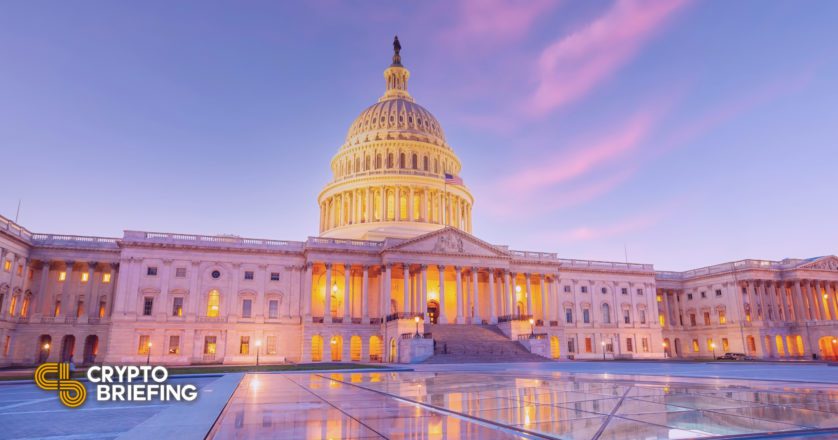Congress Hearing Bodes Well for Stablecoin Issuers
The House Financial Services Committee held a hearing to discuss “digital assets and the future of finance” Tuesday. Stablecoins were a key point of focus during the discussion.

Key Takeaways
- The House Financial Services Committee met to discuss stablecoins yesterday.
- Committee members mostly argued that stablecoin issuers should not have to become regulated banks.
- U.S. regulators have been watching stablecoins closely over the last year. How the technology will be regulated remains unclear.
Share this article
The committee mostly argued that stablecoin issuers should not have to become insured depository institutions.
Committee Discusses Stablecoin Report
Stablecoin issuers may escape the Biden Administration’s recommendation of limiting distribution to insured banks and credit unions.
In a Tuesday hearing, members of the House Financial Services Committee mostly agreed that stablecoin issuers should not have to become insured depository institutions. The committee met to discuss a November report on stablecoins published by the President’s Working Group on Financial Markets.
While members of the committee were in agreement that stablecoins need a balanced regulatory framework, both Republicans and Democrats in attendance opposed the President’s Working Group proposal to limit stablecoin issuance to banks.
Rep. Tom Emmer, R-Minn., who’s shown strong support for the crypto industry in the past, criticized the report and remarked that “banks should not be the only institutions in the ecosystem with dibs to issue the potential array of financial products that the President’s Working Group report simply lumps together as a stablecoin.”
“It occurs to me that limiting stablecoin issuance to insured depository institutions, which have a high barrier to entry, could limit competition,” added Rep. Gregory Meeks, before arguing that imposing a limit could impact racial equality due to the high proportions of people of color that do not use traditional bank services.
Other key topics discussed during the four-hour discussion were the potential risks of stablecoins, including the impact their growth could have on the U.S. dollar. As stablecoins typically track the price of traditional currencies like the dollar, regulators have long feared that they could threaten its supremacy as the world’s reserve currency.
Still, the conclusions the committee reached on whether stablecoin issuance should be limited to banks and credit unions will likely be well received by the likes of Circle and Tether, the issuers of crypto’s most popular two stablecoins, USDC and USDT. As crypto has grown over the last year, fears surrounding stablecoins like USDC and USDT have escalated in the U.S. The Treasury and Federal Reserve has warned of the risks of stablecoins, raising questions about how companies like Circle and Tether may be regulated in the near future.
While the Biden Administration has pushed to limit stablecoin issuance and regulate the sector with strict oversight, members of the House Financial Services Committee appear open to embracing stablecoins as crypto technology gains adoption.
Disclosure: At the time of writing, the author of this feature owned USDC, ETH, and several other cryptocurrencies.
